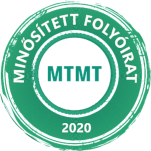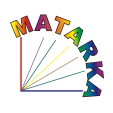Professional Learning Communities Supporting Professional Development of Teacher Educators in Myanmar Education Colleges
DOI:
https://doi.org/10.37205/TEL-hun.2024.1.02Keywords:
professional learning community, professional development, teacher educatorsAbstract
Teachers need to improve their teaching skills to increase the learning benefits of their students. Professional learning communities not only cater to the needs of individual teachers and the whole staff, but also improve the quality of their teaching, and through this, boost their students’ achievement.
In a professional teaching community, the key to
improved learning for students is the continuous learning of teachers (Bryk, Camburn & Louis, 2009). The professional learning community (PLC) is becoming a popular technique
for teachers' professional development, and, as a result, there is a need for research that explores their impact.
This study aims to map the effects of the implementation of professional learning communities at a Myanmar Education College, how they impact on the quality of teacher educators’ work, and, hopefully, in turn, on their student teachers’ achievements. Methodically, the study used a qualitative approach and a random sample to obtain data from teacher educators at Monywa Education College, who answered open-ended interview questions. The data revealed that there is a need for more PLCs of teacher educators to nurture their professional development and for the provision of extensive pedagogical support for the operation of PLCs in the current situation.
References
Bretz, N. L. (2012). Using professional learning communities to increase student achievement. Ed. D., Northeastern University.
Bryk, A., Camburn, E. & Louis, K. S. (1999). Professional community in Chicago elementary schools: Facilitating factors and organizational consequences. Educational administration quarterly, 35(5), 751–781. https://doi.org/10.1177/00 1316 1X993 5500 4
Bush, T. & Glover, D. (2014). School leadership models: What do we know? School Leadership & Management, 34(5), 553–571. https://doi.org/10.1080/136 3243 4.2014.928680
Caskey, M. M. & Carpenter, J. (2012). Organizational models for teacher learning. Middle School Journal, 43(5), 52–62.
Cordingley, P., Bell, M., Rundell, B. & Evans, D. (2005). The impact of collaborative continuing professional development (CPD) on classroom teaching and learning. In: Research Evidence in Education Library. EPPI-Centre, Social Science Research Unit, Institute of Education.
Cuddapah, J. L. & Clayton, C. D. (2011). Using Wenger’s communities of practice to explore a new teacher cohort. Journal of Teacher Education, 62(1), 62–75. https://doi.org/10.1177/00 2248 71103775 07
Danielson, C. (2002). Enhancing student achievement: A framework for school improvement. ASCD.
Darling-Hammond, L. & McLaughlin, M. W. (1995). Policies that support professional development in an era of reform. Phi Delta Kappan, 76(8), 597.
Darling-Hammond, L. (1998). Teachers and teaching: Testing policy hypotheses from a national commission report. Educational Researcher, 27(1), 5–15.
Darling-Hammond, L., & Richardson, N. (2009). Teacher learning: What matters? Educational Leadership, 66(5), 46–53.
Donohoo, J. (2017). Collective Efficacy. Corwin.
DuFour, R. (2004). Leading edge: The best staff development is in the workplace, not in a workshop. Journal of Staff Development, 25(2), 63–64.
DuFour, R., DuFour, R., Eaker, R. & Many, T. (2006). Learning by doing: A handbook for professional learning communities that work. Solution Tree.
Dufour, R., Dufour, R. & Eaker, R. (2008). Revisiting professional learning communities at work: New insights for improving schools. Solution Tree.
Dufour, R. (2011). Work together: But only if you want to. Phi Delta Kappan, 92(5), 57– 61. doi:10.1177/00 3172 17110920 051 3
Fogarty, R. & Pete, B. (2010). Professional learning 101: A syllabus of seven protocols. Phi Delta Kappan, 91(4), 32–34. https://doi.org/10.1177/00 3172 17100910 040 7
Fullan, M. (2007). The new meaning of educational change. Teachers College.
Hansen, B. & Larusdottir, S. H. (2015). Instructional leadership in compulsory schools in Iceland and the role of school principals. Scandinavian Journal of Educational Research, 59(5), 583–603. https://doi.org/ 10.1080/003 1383 1.2014.965788
Harada, V. H. (2001). Professional development as collaborative inquiry. Knowledge Quest, 29(5), 13–19.
Harris, A., & Jones, M. (2010). Professional learning communities and system improvement. Improving Schools, 13(2), 172–181. doi:10.1177/13 6548 02103764 87
Hellner, J. (2008). The professional learning community: A fulcrum of change.
Kairaranga, 9(1), 50–53. https://doi.org/10.54322/kairaranga.v9i1.110
Hord, S. M. (1997). Professional learning communities: Communities of continuous inquiry and improvement. Southwest Educational Development Laboratory.
Hord, S. M. (2004). Learning together, leading together: Changing schools through professional learning communities. Teachers College.
Hord, S. & Sommers W. A. (2008). Leading professional learning communities: Voices from research and practice. Corwin Press & National Association of Secondary School Principals.
Hord, S. M. (2008). Evolution of Professional Learning Community. Journal of Staff Development. 29(3), 10–13.
Humphries, M. G. (2002). A case study of a professional development model linking arts- based teaching practices to classroom instruction. Dissertation Abstracts International, 64(11), 1–311.
Kennedy, A., Deuel, A., Nelson, T. H. & Slavit, D. (2011). Requiring collaboration or distributing leadership. Phi Delta Kappan, 92(8), 20–24. https://doi.org/10.1177/00 3172 17110920 080 5
Leclerc, M., Moreau, A. C., Dumouchel, C. & Sallafranque-St-Louis, F. (2012). Factors that promote progression in schools functioning as professional learning community. International Journal of Education Policy & Leadership, 7(7), 1–14.
Leithwood, K. & Jantzi, D. (2000). Principal and teacher leadership effects: A replication. School Leadership & Management, 20(4), 415–434. https://doi.org/10.1080/7136 9696 3
Linder, R. A., Post, G. & Calabrese, K. (2012). Professional learning communities: Practices for successful implementation. Delta Kappa Gamma Bulletin, 78(3), 13–22.
Little, J. W. (1990). The persistence of privacy: Autonomy and initiatives in teachers’ professional relations. Teachers College Record, 91(4), 509–536. https://doi.org/10.1177/01 6146 81900910 040 3
Little, J. W. (1997). Excellence in professional development and professional community. Washington, D.C. Office of Educational Research and Improvement
Louis, K. S. & Kruse, S. D. (1995). Professionalism and community: Perspectives on reforming urban schools. Corwin Press.
Lwin, P. K. K. & Ye, Y. (2021). A study of the relationship between teachers’ perceptions towards school climate and the professional learning community at a private school, Myanmar. Scholar: Human Sciences, 13(1), 1–14.
Maldonado, L. & Victoreen, J. (2002). Effective professional development: Findings from research. College Entrance Examination Board.
Mckenna, Amy. (2021). In the History and Government and society sections. https://www.britannica.com/place/Myanmar
Ministry of Education (2012). Education development in Myanmar.
Ministry of Education (2014). National EFA Review Report.
Ministry of Education (2015). Myanmar National Education Strategic Plan (2016–2021).
Ministry of Labour, Immigration and Population (2020). Department of Population. http://www.dop.gov.mm/en
Morrissey, M. S. (2000). Professional learning communities: An ongoing exploration. Southwest Educational Development Laboratory.
Neuzil, L. M. & Vaughn, M. (2010, Summer). An examination of professional development activities available to teachers in the mid-America region of the association of Christian schools international. A Journal of the International Christian Community for Teacher Education, 5(1), 1–15. http://icctejournal.org/ issues/v5il/v5il-professional-development
OECD (2011). Preparing Teachers and Developing School Leaders for 21st Century – Lessons from around the world.
Owens, M. A. (2010). Creating a successful professional culture: Reorganizing to rebuild a challenging school. Journal of Cases in Educational Leadership, 13(4),1–10. https://doi.org/10.1177/15 5545 89103777 85
Panella, E. (1999). Toward better teaching: Partnerships that make a difference. The High School Magazine, 7(2), 40–43.
Robinson, V. M., Hohepa, M. & Lloyd, C. (2007). School leadership and student outcomes: Identifying what works and why. Australian Council for Educational Leaders.
Sirotnik, K. A. (1999). Making sense of educational renewal. Phi Delta Kappan, 80(8), 606–610.
Smith, M. & Allsebrook, A. (1994). Ethnic groups in Burma. Anti-Slavery International.
Stoll, L., Bolam, R., McMahon, A., Thomas, S., Wallace, M., Greenwood, A. & Hawkey, K. (2005). Creating and sustaining effective professional learning communities. National College for School Leadership.
Tschannen-Moran, M. & Barr, M. (2004). Fostering student learning: The relationship of collective teacher efficacy and student achievement. Leadership and Policy in Schools, 3(3), 189–209. https://doi.org/10.1080/15 7007 60490503 70 6
UNESCO Yangon Project Office (2020). Strengthening pre-service teacher education in Myanmar (STEM): Phase II. Final narrative report.
https://unesdoc.unesco.org/ark:/482 23/pf00 0037 5111
UNICEF & UNESCO. (2021). Situation Analysis on the Effects of and Responses to COVID–19 on the Education Sector in Southeast Asia.
Van Driel, J. H. & Berry, A. (2012). Teacher professional development focusing on pedagogical content knowledge. Educational Researcher, 41(1), 26–28. https://doi.org/10.3102/00 1318 9X114 3101 0
Downloads
Published
How to Cite
Issue
Section
License
Copyright (c) 2024 The author(s)

This work is licensed under a Creative Commons Attribution-NonCommercial-NoDerivatives 4.0 International License.








